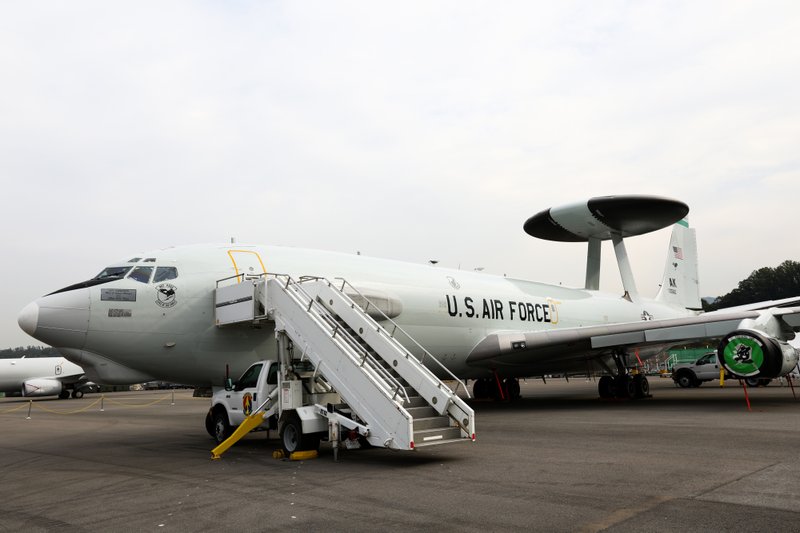A $2.8 billion Boeing Co. upgrade of its Airborne Warning and Control System -- the technology on surveillance aircraft that are popularly called AWACS -- is dogged by delays caused in part by an almost yearlong closing of two classified laboratories developing software for the project, Pentagon agencies said Monday.
The two laboratories in Oklahoma City failed to pass Defense Department security certifications from January to December of last year. Boeing builds the aircraft, a staple of U.S. and allied surveillance arsenals, that coordinate friendly planes and detect enemy aircraft.
Boeing has worked to "address deficiencies and regain their certifications" for the AWACS laboratories, Air Force spokeswoman Ann Stefanek said.
The contractor is upgrading the 1970s-era AWACS electronics of the Air Force's 31 Airborne Early Warning and Control jets. So far, Boeing has updated and delivered 19 of the planes, which are recognized worldwide by their rotating radar domes.
"The primary reasons software development has been behind schedule" are "Boeing's failure to meet" certifications, Mark Woodbury, a spokesman for the Defense Contract Management Agency, said in an email. The secondary reason, he added, is that parts for upgrade kits have been late "due to Boeing's failure" to get components delivered by contractual due dates.
It's the second major Air Force program that's proving difficult for Boeing, the No. 2 U.S. defense contractor after Lockheed Martin. Boeing is well behind schedule in providing viable fixes for serious deficiencies with its KC-46 aerial refueling tanker, Gen. Maryanne Miller, the service's top mobility commander, said last month.
Boeing spokesman Walt Rice said the Chicago-based contractor "has experienced challenges" with the AWACS upgrade resulting primarily from relocating "a complex and highly sensitive program and its supporting labs to Oklahoma City," which took more time than expected. The issues were resolved "through close interactions between the U.S. government, Boeing" and the Defense Counterintelligence and Security Agency, Rice said in an email.
The 40/45 Mission Computer and Display upgrade is designed to replace the aircraft's outdated computing and displays with open-system and commercial off-the-shelf hardware and software. AWACS is one of the world's most widely used military aircraft systems, with the U.S.' 31-plane fleet as well as planes by the North Atlantic Treaty Organization, France, Japan and Saudi Arabia.
Woodbury said some of the needed parts that were supposed to be delivered in June won't be available until this month and others won't be ready until May.
The Air Force now estimates Boeing will deliver enough refurbished aircraft by mid-2023 to declare the planes have full operational capability, a six-month slip from last year's schedule.
An Air Force fact sheet issued in 2015 had said the upgrades would be completed in 2020.
"Beyond the initial challenges associated with moving the program, Boeing and our customer experienced unforeseen technical challenges," Rice said, but "due to sensitivity of that particular work, we are unable to provide additional details."
Collectively, the issues led to the delay of a major Air Force design review "which in turn delayed contracting with suppliers and corresponding part deliveries," Rice said.
A Section on 10/01/2019
